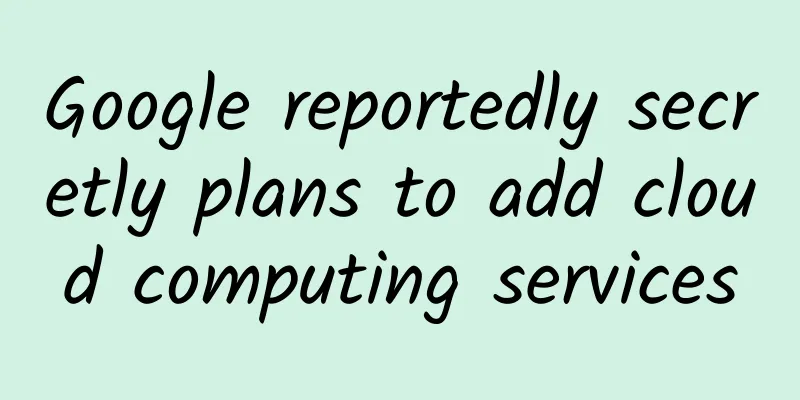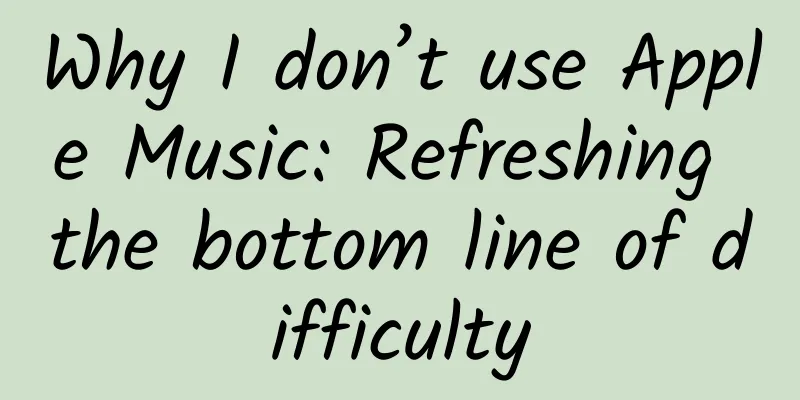Google reportedly secretly plans to add cloud computing services

|
According to Fortune, sources say Google is secretly increasing the cloud computing capabilities of its global content delivery network (CDN). In the past few months, while Amazon, Microsoft and IBM have taken turns to unveil new cloud computing data centers in China, India, Germany, the United Kingdom, South Korea and other places, another public cloud provider has remained unusually silent: Google. This is very strange because when it comes to providing cloud services to consumers, especially business consumers, location is very important. The farther away the computer servers and storage are, the longer the lag time of operations, and slow speed is definitely a major disadvantage of cloud services. The two sources said the company is considering an interesting plan. Google's cloud services are provided by four data center regions around the world, compared to Microsoft Azure, which has 20 data centers, and Amazon Web Services (AWS), which has 11 and will add another five next year. But Google has 70 data caches around the world to store video, audio and popular web data.
These endpoints are a vital part of what Google calls a “connectivity and content delivery network.” The plan — which two sources said is still under discussion — calls for these Google outposts to be paired with additional computing power, turning them into mini data centers of sorts. Both sources requested anonymity because their companies are working with Google. A Google spokesperson dismissed the rumors as speculation and declined to comment. One of the sources said Google's Cloud Engine group -- the cloud computing group -- is working with the company's internal infrastructure group to investigate whether they can add small clusters of computing power to these regional endpoints. On the one hand, this could end up being a tiered system, with big jobs running in Google's own massive data centers, which contain hundreds of thousands or even millions of servers, completely outstripping the capabilities of smaller content delivery network endpoints. If Google really decides to do this, the computing power of a small CDN would be even more limited than the computing power of the cloud computing engine group's own data centers. This scenario runs counter to the expectations of public cloud service users—customers who rent computing, storage and bandwidth services from Google, Amazon and Microsoft—who believe they can add nearly unlimited computing and storage capacity when needed. So this scenario is likely to result in two sets of infrastructure with two different pricing models. But what is certain is that Google needs to take action on global coverage as soon as possible. Amazon is the leader in public cloud infrastructure. According to an estimate by Gartner, an American IT research organization, last year, Amazon's computing power is ten times the total computing power provided by the next 14 cloud service competitors. Microsoft mainly targets commercial users. To help accelerate cloud traffic, Google and CDN market leader Akamai recently announced a partnership to connect Google’s own CDN interconnect directly to Akamai’s CDN. In September, Google announced partnerships with four other CDN providers: Cloudflare, Fastly, Level 3 Communications and Highwinds. But these partnerships are just the tip of the iceberg. Google, with its superior technical acumen, last year cut prices on a range of key storage and computing services, a move that bewildered Amazon, which is not good at letting other companies dictate price moves. Amazon sells its cloud services to business users, and many are unsure that the online search and advertising giant really cares about these cloud services (although Google has always publicly said it cares about cloud services). Google recently announced that Diane Greene, former CEO of VMware, a global cloud infrastructure and mobile business company, will be in charge of Google Cloud. Adrian Cockcroft, former chief cloud architect of Netflix and technical researcher at venture capital firm Battery Ventures, said he had never heard of Google's plan, but considering the business needs of greater geographical coverage and fast performance, this plan makes sense. If the Google Cloud team has figured out how to turn these CDN nodes into widespread mini data centers, it means they have listened to the demands of enterprise users, Cockcroft wrote in an email to Fortune. "From a technical perspective, it also means they have figured out how to reduce and package cloud services for smaller regional deployments, which is something Microsoft and another public cloud company have already achieved, and something Cockcroft believes Amazon Web Services will do better and better." |
<<: From now on, we have one less open source mobile phone system
Recommend
Yang Honghai interrupted the dispute between Yu Chengdong and He Xiaopeng over AEB: Kia cars all have it, what's new?
AEB (automatic emergency braking system) technolo...
The Earth has been rotating for 4.6 billion years without stopping. Where does the power come from?
In the past, humans did not understand why there ...
Programmers, after seeing the salary of Apple interns, don’t you want to quit?
[[138183]] Can you imagine how it feels to just l...
Nest founder: "Smart home" is a pseudo-concept, they are just "knowing homes"
Since last year, startups related to "smart ...
From the Olympics to daily fitness: Do you get the complete guide to first aid for sports injuries?
The Paris Olympics is halfway through. While watc...
Removing the mobile phone interface is divided into several steps: charging, data transmission, external devices
In 2020, when people see a mobile phone with a 3....
156 sets of high quality cosmetics wedding dresses chemical dreamweaver source code free download
156 sets of high quality cosmetics wedding dresse...
Brand "Influencer Promotion" Strategy
Combining the cases of Coca-Cola and Perfect Diar...
Jia Zhen's "Xiaohongshu Merchant Camp" Issue 6 Merchant Edition, let merchants lose paid traffic
Course Contents: 【Xiaohongshu Merchant Camp】The 6...
WOT lecturer, Taobao mobile technical expert Chen Wu: The big data collection system behind Taobao mobile's billions of UVs
The access to mobile Internet has made it impossi...
Have you used these 3 SEM account building methods?
A high-quality account structure is crucial to th...
Double 11 is here! How do those bidding veterans operate their accounts?
" Double Eleven has begun, has your traffic ...
Fan Gongzi's "White, Rich and Beautiful Girlfriend Plan" is the unprecedented and only strategy to attract white, rich and beautiful women
Course Catalog of Fan Gongzi's "White, R...
Aiti Tribe Stories (9): A Female Programmer's Development Dream
[51CTO.com original article] Xiao Bao is a straig...
How to improve WeChat search ranking? Three tips to help you get WeChat search ranking
When it comes to search engines, everyone used to...









